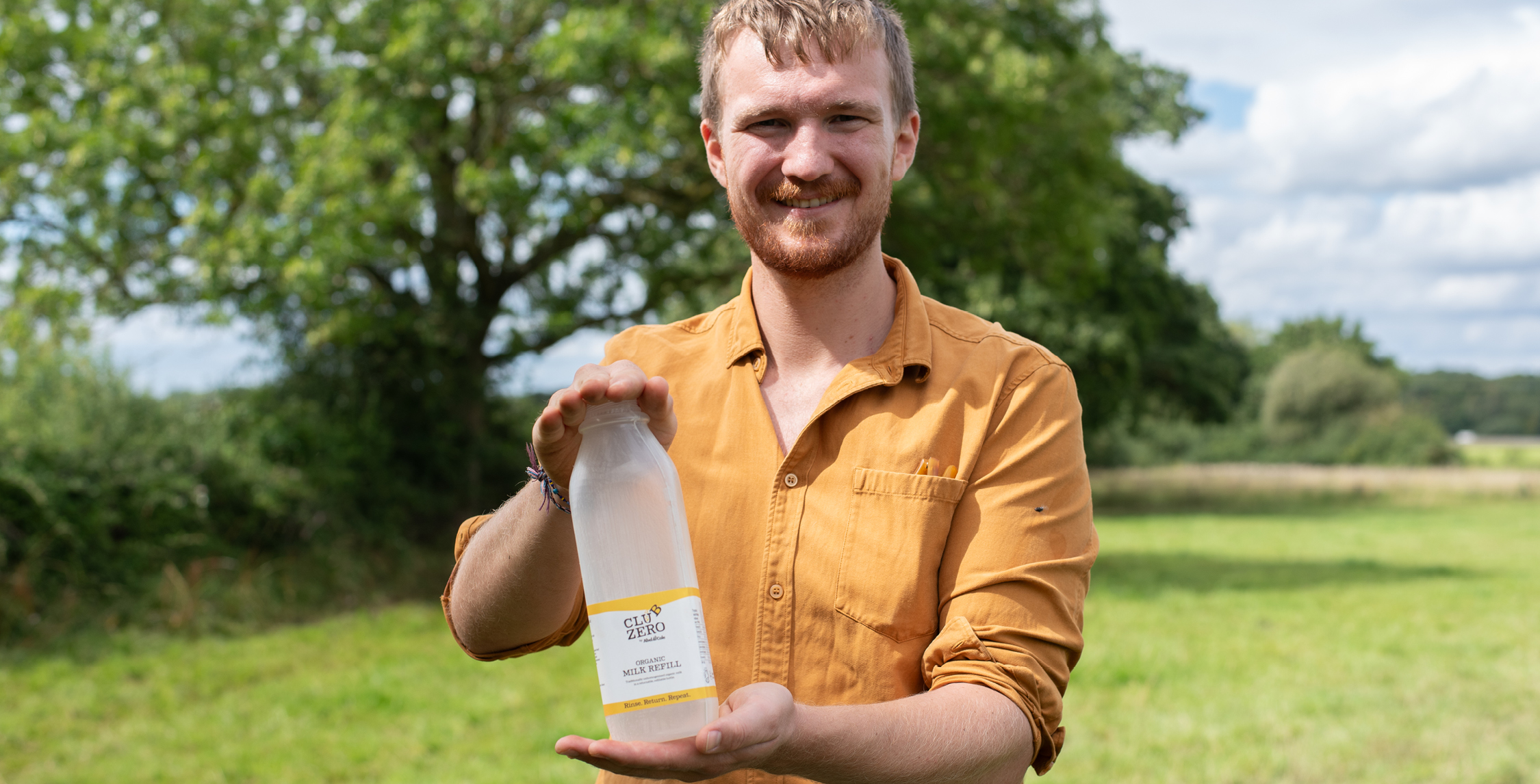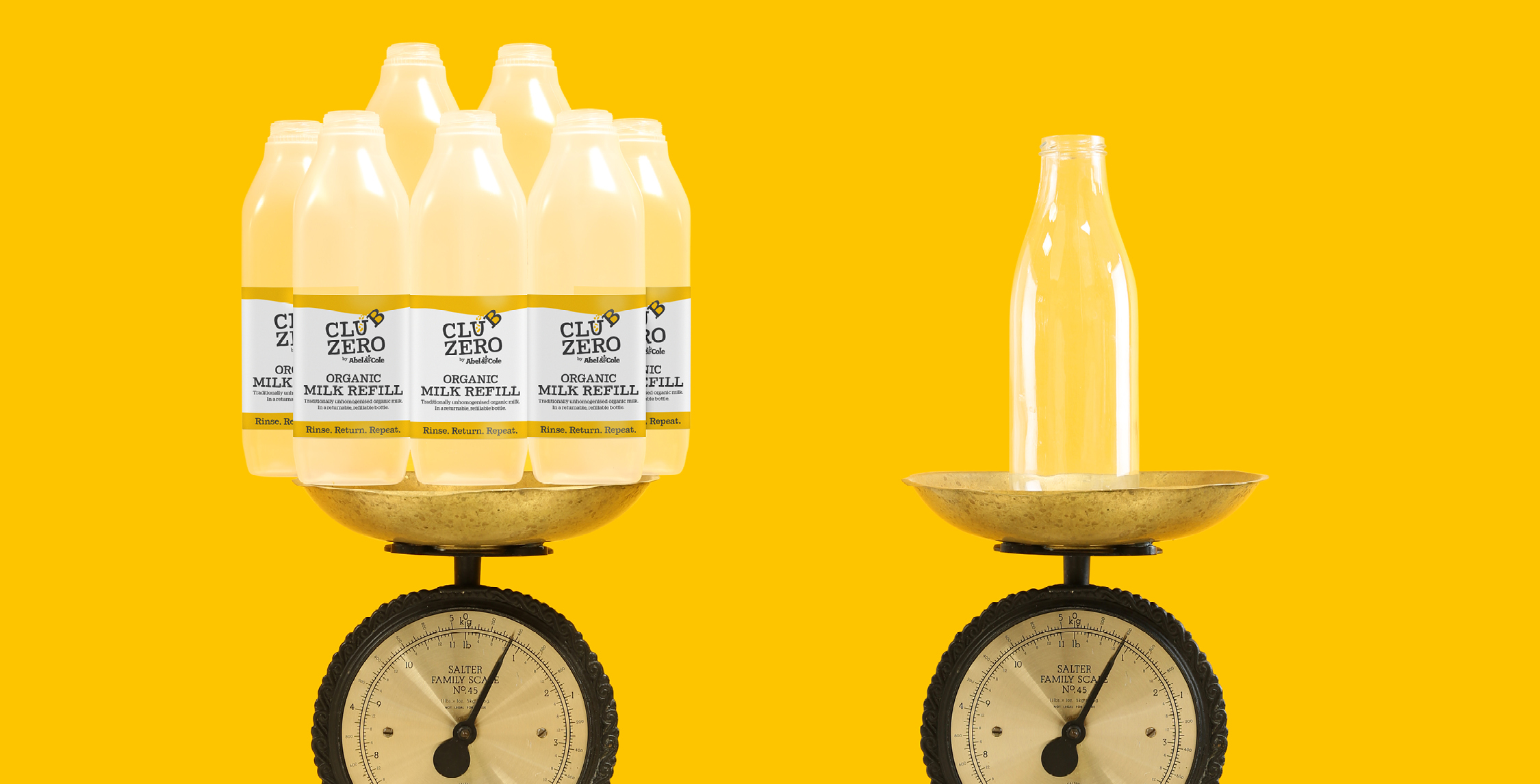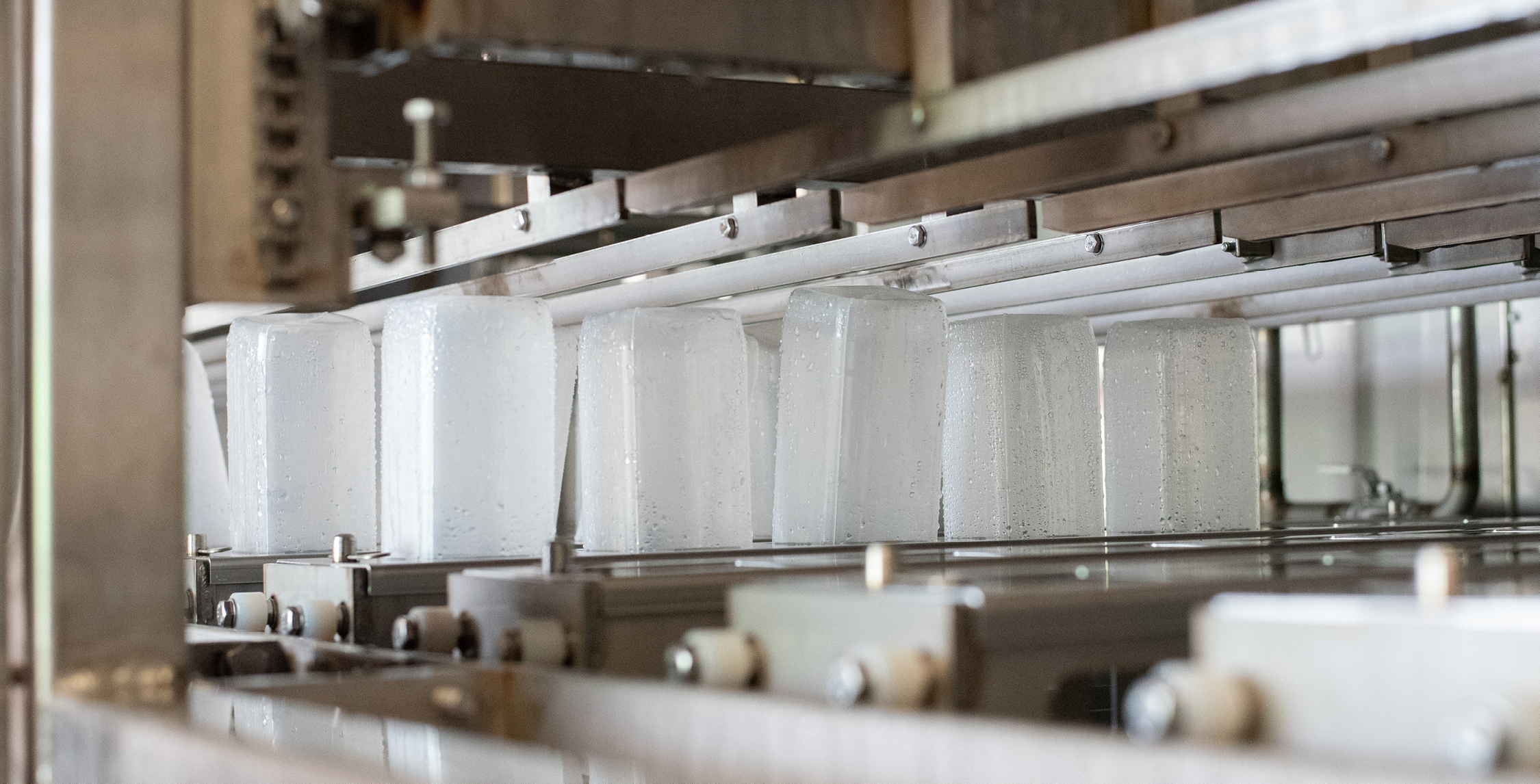Club Zero Refillable Milk


When we talk about refillable milk packaging, the first thing that comes to mind is a glass bottle. It’s a familiar concept for a reason: glass bottles are extremely easy to sterilise and relatively cheap, but they have two major drawbacks – glass is brittle. And heavy. As milk supply chains got longer in the 20th century, the industry moved over to single-use plastic packaging that cost significantly (roughly 6x) less and did not need to be collected back which suited the growing supermarket model better.
In a sense, this change was extremely logical, but it has led to a great deal of resource waste in the form of plastic pollution. It also required dairies to install specialised filling equipment that works for plastic bottles but, in many cases, can’t be retrofitted to work with glass packaging except at huge cost that would need to be passed on to customers. We felt strongly that our customers shouldn’t have to pay the price for putting the planet first.
When it came to developing our Club Zero Refillable Milk bottles, we were committed to finding the most sustainable, scalable solution. So, we asked ourselves a difficult question. What if plastic isn’t the enemy? What if, for our refillable milk, it’s actually the best material for the job?

A UK first – our innovative Club Zero Refillable Milk packaging is made from 100% Polypropylene (PP), safely allows for multiple refills and is completely recyclable.
By reusing our Club Zero Refillable Milk bottles just four times, we will…
• Cut the carbon footprint of our single-use milk bottles in half compared to heavier glass bottles, which would take over 15 returns to reach similar emissions savings*
• Save 450,000 single-use plastic milk bottles (23 tonnes of plastic)**
• Save 60 tonnes of carbon each year compared to a glass alternative***
And if most of the dairy industry made the switch, we would…
• Save a whopping 300,000 tonnes of carbon a year****
*The emissions of single-use HDPE bottles through the Abel & Cole delivery model are 0.11 kg.CO2e per bottle. The emissions of our PP bottles after 4 reuses in the delivery model are 0.053 kg.CO2e per bottle, less than half the emissions of the single-use bottle.
Comparing this to glass, we see that for single-use glass through our supply chain, the associated emissions are 0.474 kg.CO2e per bottle, which falls to 0.13 kg.CO2e per bottle after 4 returns – higher than single-use plastic. Extrapolating to 16 uses (15 returns), we see that the emissions for glass bottom out at 0.06 kg.CO2e per bottle – close to that of our PP bottles after 4 returns but still higher. Modelling a 15 returns scenario for PP, we see that the emissions have further reduced to 0.03 kg.CO2e per bottle – half that of glass.
**Abel & Cole expect annual sales of 600,000 bottles and have estimated this figure based on a return rate of 75% based upon the existing data for refillable plant milk, indicating that each bottle will be returned 3 times and therefore used 4 times. Dividing 600,000 by 4 we get 150,000 bottles which will be able to deliver all of this demand – therefore saving 450,000 bottles.
***Looking at the associated emissions of a glass bottle after 4 uses in our delivery model, we get 0.16 kg.CO2e, 0.1 kg.CO2e higher than that of PP after the same number of times around the loop (0.06 kg.CO2e). Multiplying this difference by the anticipated sales of milk in the year (600,000 bottles), we get a total figure of 60,000 kg.CO2e or 60 t.CO2e.
****If 90% of the 7 billion litres of milk distributed annually in the UK moved from single-use plastic to a reusable plastic bottle that is reused 4 times as per Abel & Cole’s packaging model, more than 300,000 tonnes of carbon would be saved.
To explain in detail – if we assume that 90% of the 7 billion litres of milk distributed annually in the UK (i.e. 6,300,000,000 litres) are in 30g single-use HDPE bottles, we get an emissions figure of 0.105 kg.CO2e per bottle.
Our reusable PP bottles weigh 50g and are projected to be used on average 4 times (3 returns) which gives a figure of 0.057 kg.CO2e per bottle.
This shows a carbon saving of 0.048 kg.CO2e, which multiplies to 301,267 kg.CO2e or 301 tonnes.CO2e.

Plastic bottles can be hard to wash and need to be dried properly. But we were determined to find a solution to make this reuse a reality. So we worked with MV Technical Solutions on a bespoke washer. Returned bottles are thoroughly cleaned and sanitised in an eight-stage washing process, which we tested multiples times with our expert Technical team and the Environmental Health Organisation to ensure that we were getting the highest possible quality of clean.
After thorough testing, we commissioned a bespoke PP bottle specifically designed for reuse and completed rigorous chemical tests to ensure that they were ready to be refilled and reused.
Our plastic milk bottle refill process was ready. A true packaging innovation.
Which is why we’re calling on big supermarkets and the dairy industry to get in touch. We have years of learnings to share. And experts excited to tell you all about it. Imagine the impact we could have together.
Published October 2023
Want to make the switch to our Club Zero refillable milk? Explore the range, here.


